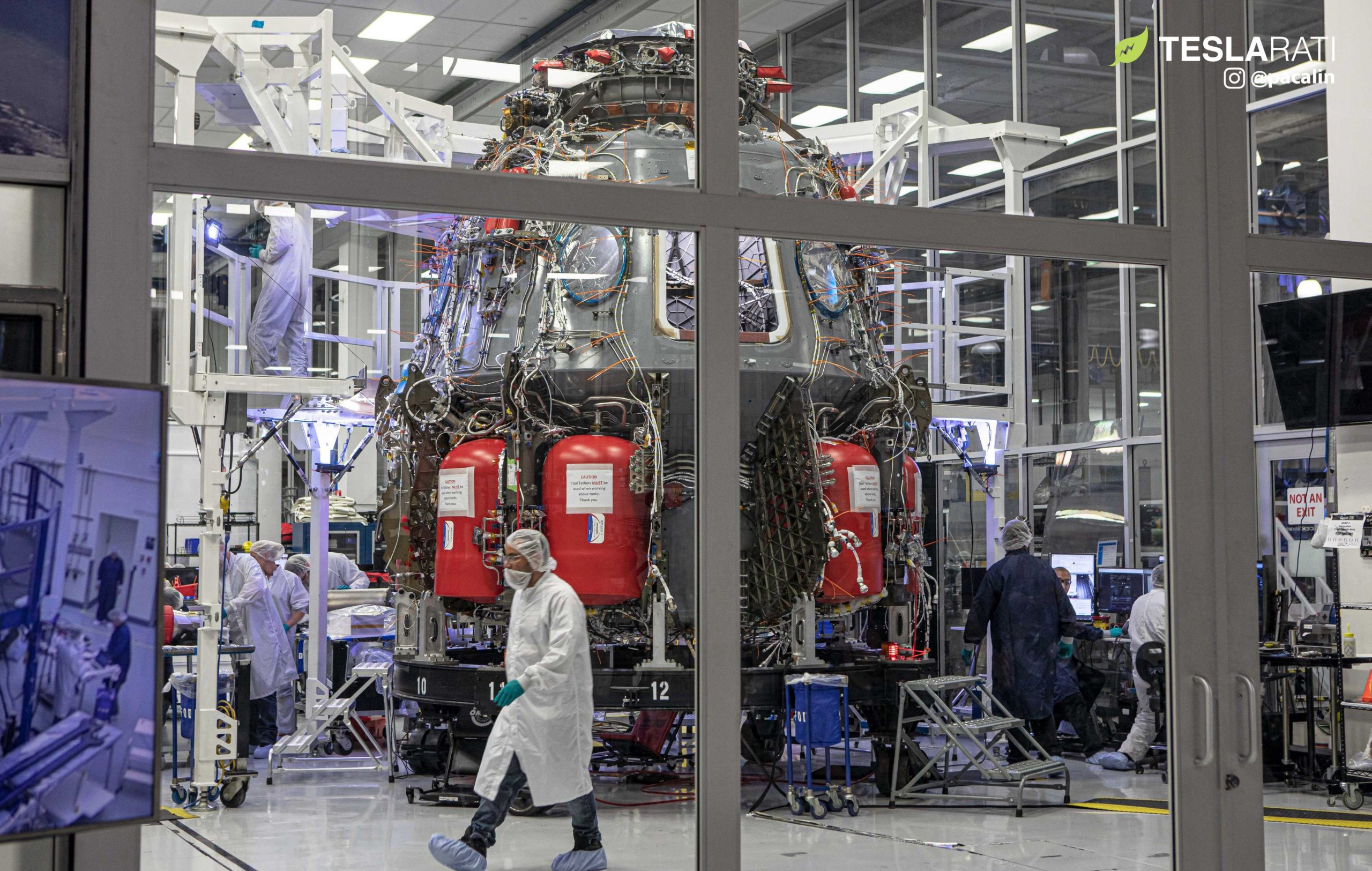
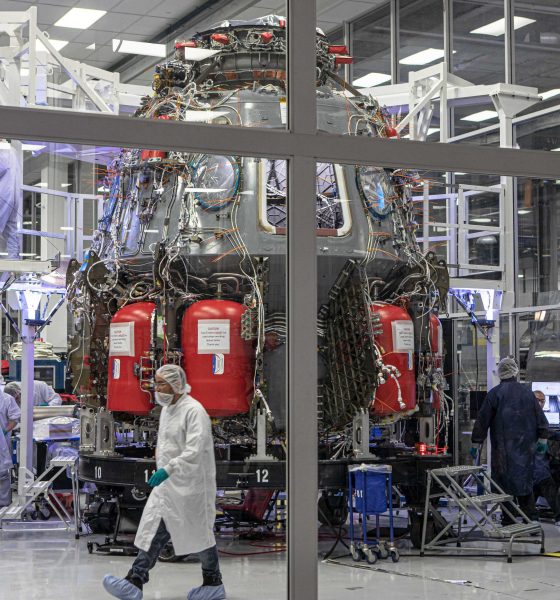
News
SpaceX’s Crew Dragon explosion response praised by NASA in new briefing
During a recent NASA council meeting, SpaceX’s response to a Crew Dragon capsule’s April 20th explosion was repeatedly praised by the agency’s senior Commercial Crew Program (CCP) manager, her optimism clearly rekindled after several undeniably challenging months.
On October 29th and 30th, NASA held its second 2019 Advisory Council (NAC) meeting, comprised of a number of (more or less) independent advisors who convene to receive NASA updates and provide a sort of third-party opinion on the agency’s programs. Alongside NASA’s SLS rocket and Orion spacecraft, Commercial Crew continues to be a major priority for NASA and is equally prominent in NAC meetings, where program officials present updates.
On October 30th, CCP manager Kathy Lueders presented one such update on the progress being made by Commercial Crew providers Boeing and SpaceX, both of which are just weeks away from multiple crucial tests. Boeing is scheduled to perform a pad abort test of its Starliner spacecraft as early as November 4th, while SpaceX is targeting a static fire of a Crew Dragon capsule on November 6th. If that test fire is successful, the same capsule could be ready to support SpaceX’s In-Flight Abort (IFA) test in early-December, and Boeing’s Starliner could attempt its orbital launch debut (OFT) no earlier than (NET) December 17th.
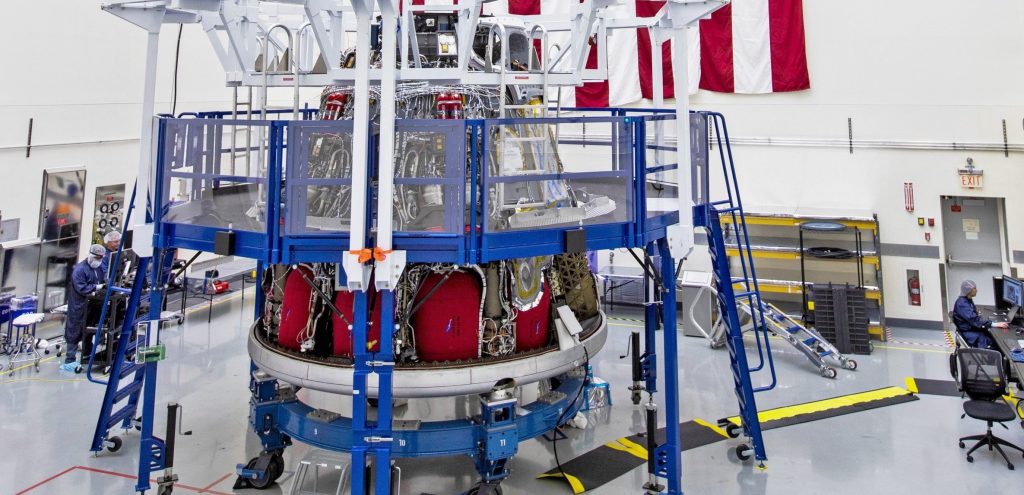
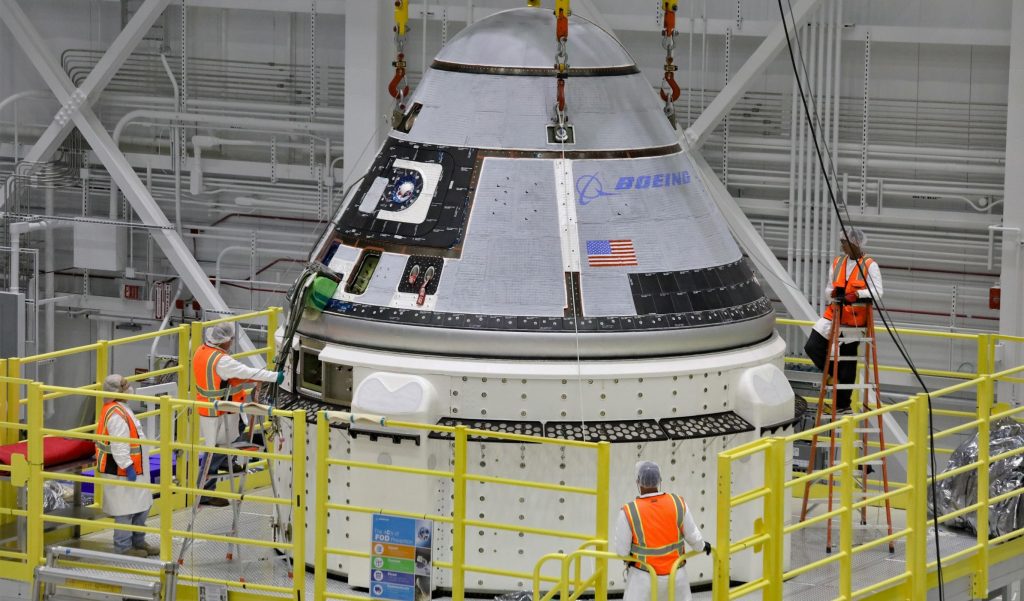
For both SpaceX and Boeing, the results of their respective In-Flight Abort and Orbital Flight Test will determine just how soon NASA will certify each company to attempt their first commercial launches with astronauts aboard. If Boeing’s Pad Abort goes perfectly and Starliner’s NET December 17th OFT is also a total success, the company could be ready for its Crewed Flight Test (CFT) anywhere from 3-6+ months after (March-June 2020).
If SpaceX’s IFA test goes perfectly next month, Crew Dragon’s Demo-2 astronaut launch could occur as early as February or March 2020. In April 2019, SpaceX suffered a major setback when flight-proven Crew Dragon capsule C201 violently exploded milliseconds before a planned abort thruster static fire test, reducing the historic spacecraft to a field of debris. Before that failure, C201 had been assigned to perform the in-flight abort test, while capsule C205 was in the late stages of assembly for Demo-2.
Had that explosion never happened and the C201 IFA gone perfectly, Demo-2 could have potentially been ready for launch as early as August or September 2019. Instead, C201’s demise forced SpaceX to change capsule assignments, reassigning C205 to support Crew Dragon’s IFA, while C206 was moved to Demo-2. Nevertheless, as both SpaceX and NASA officials have noted, C201’s on-pad explosion has been viewed as a gift, for the most part, as the capsule failed in a largely controlled and highly-instrumented environment.
In fact, NASA manager Kathy Lueders complimented NASA’s involvement in the anomaly resolution process and repeatedly praised SpaceX’s response to Dragon’s explosion. Although the explosion was an undesirable result, SpaceX’s relentless prioritization flight hardware testing prevented a failure from occurring in flight. Performed alongside NASA, SpaceX’s subsequent investigations and experimentation have essentially brought to light a new design constraint, the knowledge of which many space agencies and companies will likely benefit from.
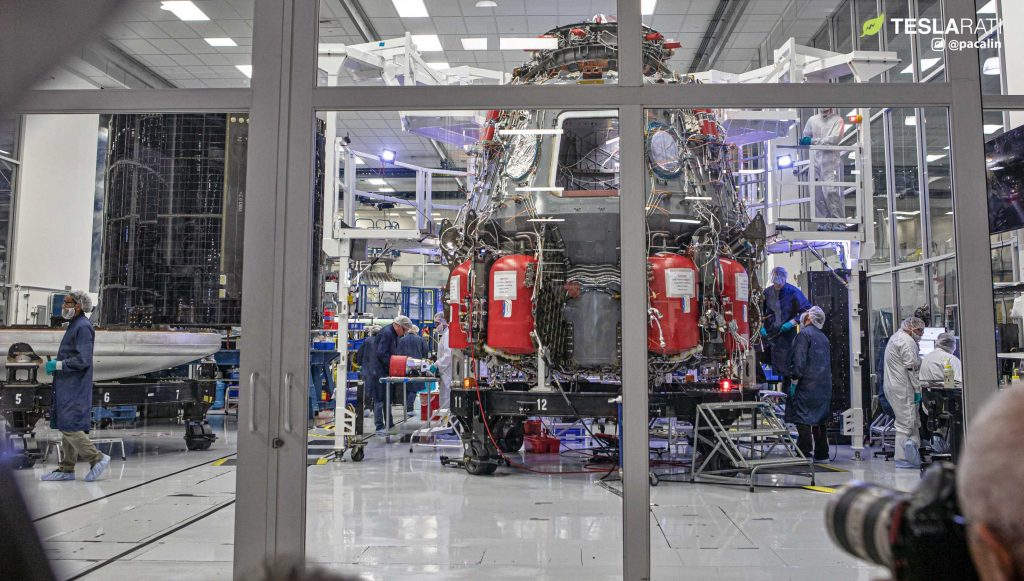
Most notably, however, Lueders detailed how impressed she was at the incredible speed with which SpaceX was able to respond to Crew Dragon’s catastrophic static fire anomaly.
“So the nice thing is that the SpaceX folks had a bunch of vehicles in flow. So even though we lost Demo-1 [capsule C201], … [SpaceX] was able to pull up what was going to be our Demo-2 vehicle, outfit it, make [necessary] changes [and upgrades] to the vehicle, and get it ready for [flight] with a six-month slip — a pretty phenomenal turnaround.“
Kathy Lueders – NASA – 10/30/19
Crew Dragon C201 exploded on April 20th, 2019. Five months and seven days later, a new Crew Dragon capsule and trunk – having undergone significant modifications as a result of the C201 explosion investigation – were delivered to SpaceX’s Florida facilities for their new role, Dragon’s In-Flight Abort test. Meanwhile, despite the upset and general instability, Crew Dragon capsule C206 – previously assigned to the flight after Demo-2 – is in the late stages of assembly and integration and is expected to ship to Florida for preflight preparations in early-December.
Altogether, those turnaround times are almost unheard of for such complex systems. For example, Boeing’s Starliner service module – generally less complex than the crew capsule – suffered a serious anomaly during a June 2018 static fire test. As a result, Boeing had to fully replace the service module with new hardware and repeat the same test before it could proceed to Starliner’s Pad Abort, at the time expected a few weeks later (Q2 2018).
Like SpaceX, Boeing was forced to cannibalize future launch hardware to re-attempt its static fire test, which was ultimately completed some 11 months after the anomaly on May 24th, 2019. The Pad Abort previously expected in mid-2018 is now expected no earlier than November 4th, 2019, a delay of 12-16 months. In simpler terms, the six or so months that Crew Dragon C201’s explosion has delayed SpaceX’s In-Flight Abort test is an undeniably “phenomenal turnaround” relative to both NASA’s expectations and SpaceX’s peers.

A happy partnership
The day prior, famed ex-NASA engineer and Space Shuttle program manager Wayne Hale – now serving as NAC chair – brought up SpaceX in an entirely different context, deeming the company as a whole a “sterling example” of NASA’s ability to incubate and incentivize commercial spaceflight.
Indeed, SpaceX has radically reshaped almost every aspect of the global spaceflight industry in the ten years since NASA awarded the company its first major contract, proving that orbital-class commercial rockets can be built, landed, and reused – all for far less money than NASA or competitors believed was possible.
All things considered, NASA appears to be more content than ever with the results its fruitful SpaceX partnerships are producing, and a number of senior NASA officials seem to be increasingly willing to unbridle their enthusiasm as a result.
Check out Teslarati’s Marketplace! We offer Tesla accessories, including for the Tesla Cybertruck and Tesla Model 3.

News
Tesla FSD fleet is nearing 7 billion total miles, including 2.5 billion city miles
As can be seen on Tesla’s official FSD webpage, vehicles equipped with the system have now navigated over 6.99 billion miles.

Tesla’s Full Self-Driving (Supervised) fleet is closing in on almost 7 billion total miles driven, as per data posted by the company on its official FSD webpage.
These figures hint at the massive scale of data fueling Tesla’s rapid FSD improvements, which have been quite notable as of late.
FSD mileage milestones
As can be seen on Tesla’s official FSD webpage, vehicles equipped with the system have now navigated over 6.99 billion miles. Tesla owner and avid FSD tester Whole Mars Catalog also shared a screenshot indicating that from the nearly 7 billion miles traveled by the FSD fleet, more than 2.5 billion miles were driven inside cities.
City miles are particularly valuable for complex urban scenarios like unprotected turns, pedestrian interactions, and traffic lights. This is also the difference-maker for FSD, as only complex solutions, such as Waymo’s self-driving taxis, operate similarly on inner-city streets. And even then, incidents such as the San Francisco blackouts have proven challenging for sensor-rich vehicles like Waymos.
Tesla’s data edge
Tesla has a number of advantages in the autonomous vehicle sector, one of which is the size of its fleet and the number of vehicles training FSD on real-world roads. Tesla’s nearly 7 billion FSD miles then allow the company to roll out updates that make its vehicles behave like they are being driven by experienced drivers, even if they are operating on their own.
So notable are Tesla’s improvements to FSD that NVIDIA Director of Robotics Jim Fan, after experiencing FSD v14, noted that the system is the first AI that passes what he described as a “Physical Turing Test.”
“Despite knowing exactly how robot learning works, I still find it magical watching the steering wheel turn by itself. First it feels surreal, next it becomes routine. Then, like the smartphone, taking it away actively hurts. This is how humanity gets rewired and glued to god-like technologies,” Fan wrote in a post on X.
News
Tesla starts showing how FSD will change lives in Europe
Local officials tested the system on narrow country roads and were impressed by FSD’s smooth, human-like driving, with some calling the service a game-changer for everyday life in areas that are far from urban centers.

Tesla has launched Europe’s first public shuttle service using Full Self-Driving (Supervised) in the rural Eifelkreis Bitburg-Prüm region of Germany, demonstrating how the technology can restore independence and mobility for people who struggle with limited transport options.
Local officials tested the system on narrow country roads and were impressed by FSD’s smooth, human-like driving, with some calling the service a game-changer for everyday life in areas that are far from urban centers.
Officials see real impact on rural residents
Arzfeld Mayor Johannes Kuhl and District Administrator Andreas Kruppert personally tested the Tesla shuttle service. This allowed them to see just how well FSD navigated winding lanes and rural roads confidently. Kruppert said, “Autonomous driving sounds like science fiction to many, but we simply see here that it works totally well in rural regions too.” Kuhl, for his part, also noted that FSD “feels like a very experienced driver.”
The pilot complements the area’s “Citizen Bus” program, which provides on-demand rides for elderly residents who can no longer drive themselves. Tesla Europe shared a video of a demonstration of the service, highlighting how FSD gives people their freedom back, even in places where public transport is not as prevalent.
What the Ministry for Economic Affairs and Transport says
Rhineland-Palatinate’s Minister Daniela Schmitt supported the project, praising the collaboration that made this “first of its kind in Europe” possible. As per the ministry, the rural rollout for the service shows FSD’s potential beyond major cities, and it delivers tangible benefits like grocery runs, doctor visits, and social connections for isolated residents.
“Reliable and flexible mobility is especially vital in rural areas. With the launch of a shuttle service using self-driving vehicles (FSD supervised) by Tesla in the Eifelkreis Bitburg-Prüm, an innovative pilot project is now getting underway that complements local community bus services. It is the first project of its kind in Europe.
“The result is a real gain for rural mobility: greater accessibility, more flexibility and tangible benefits for everyday life. A strong signal for innovation, cooperation and future-oriented mobility beyond urban centers,” the ministry wrote in a LinkedIn post.
News
Tesla China quietly posts Robotaxi-related job listing
Tesla China is currently seeking a Low Voltage Electrical Engineer to work on circuit board design for the company’s autonomous vehicles.

Tesla has posted a new job listing in Shanghai explicitly tied to its Robotaxi program, fueling speculation that the company is preparing to launch its dedicated autonomous ride-hailing service in China.
As noted in the listing, Tesla China is currently seeking a Low Voltage Electrical Engineer to work on circuit board design for the company’s autonomous vehicles.
Robotaxi-specific role
The listing, which was shared on social media platform X by industry watcher @tslaming, suggested that Tesla China is looking to fill the role urgently. The job listing itself specifically mentions that the person hired for the role will be working on the Low Voltage Hardware team, which would design the circuit boards that would serve as the nervous system of the Robotaxi.
Key tasks for the role, as indicated in the job listing, include collaboration with PCB layout, firmware, mechanical, program management, and validation teams, among other responsibilities. The role is based in Shanghai.
China Robotaxi launch
China represents a massive potential market for robotaxis, with its dense urban centers and supportive policies in select cities. Tesla has limited permission to roll out FSD in the country, though despite this, its vehicles have been hailed as among the best in the market when it comes to autonomous features. So far, at least, it appears that China supports Tesla’s FSD and Robotaxi rollout.
This was hinted at in November, when Tesla brought the Cybercab to the 8th China International Import Expo (CIIE) in Shanghai, marking the first time that the autonomous two-seater was brought to the Asia-Pacific region. The vehicle, despite not having a release date in China, received a significant amount of interest among the event’s attendees.








